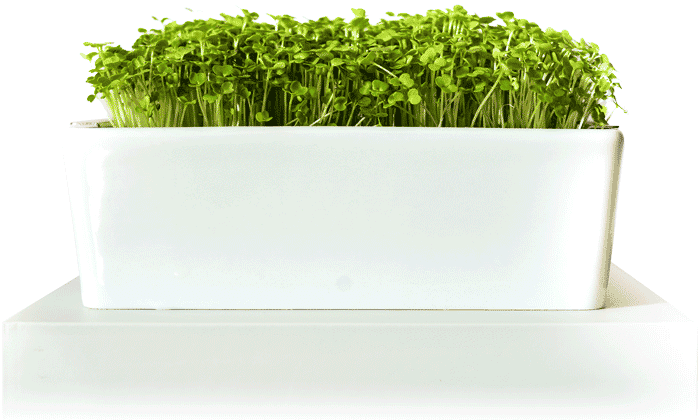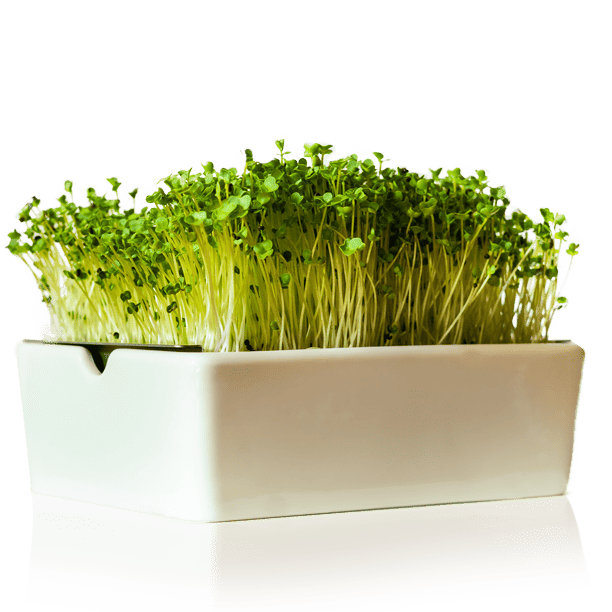Almost every health enthusiast is likely familiar with the terms ‘microgreens’ and ‘sprouts’. As emerging superfoods, both are loaded with vitamins, minerals, and antioxidants but what is the difference? Which one is healthier? Today we will cover these questions and hopefully bettering your understanding of microgreens vs sprouts.
Are Microgreens and Sprouts the Same Thing?
Microgreens and sprouts are often used interchangeably, but are they truly the same thing? The short answer is no. While they are both young plants, they’re cultivated and harvested at different stages of growth, leading to a significant difference in their nutritional profiles. Let’s clear up any misconceptions and delve deeper into the heart of the matter
What are the Differences Between Microgreens and Sprouts?
While both microgreens and sprouts have made their mark on health-conscious individuals worldwide, the key differences between these two superfoods should be known.
Sprouts
Sprouts start off by germinating in water in a dark area and are usually harvested around 3-4 days in; right after their roots start to develop. When eating sprouts you can eat the whole plant, root and stem.
Microgreens
Microgreens on the other hand, can grow both in soil and hydroponically on a grow mat, after a few days they are exposed to sunlight to photosynthesize, unlike sprouts. Also they’re harvested a bit later than sprouts, typically when the plant has developed its first true leaves. When eating microgreens both the stem and leaves are eaten, but the roots are left behind.
Furthermore, the distinct growth processes and harvesting times of microgreens and sprouts significantly affect their nutritional differences. In the following part of our discussion, we’ll delve deeper into the nutritional profiles of both, helping you decide whether microgreens or sprouts are better suited for you.
Nutritional Profile of Microgreens and Sprouts
Though both are packed with beneficial nutrients, they do not share identical nutritional profiles.
Microgreens are densely packed with various vitamins and minerals. Their growth process, which involves photosynthesis, allows them to develop these complex nutritional attributes.
Sprouts are less nutritious than microgreens due to the fact that they do not undergo photosynthesis, a primary reason microgreens contain so much Vitamin C, fiber, and enzymes.
Are Microgreens or Sprouts Better for You?
While both sprouts and microgreens are extremely healthy veggies, microgreens generally contain a higher nutrient content. However, nutrient content shouldn’t be the only determinant in your choice since differences in taste and texture between microgreens and sprouts are noticeable and may be a determining factor for some. Sprouts offer a unique, slightly bitter flavor and a crunchy texture, while microgreens provide a range of flavors and a slightly softer texture due to their later stage of growth.
Also worth considering is the variety available. With microgreens, you’re exposed to a wider assortment of options, given that almost any vegetable seed can be grown into a microgreen. This diversity allows for more customization in flavor and nutrient profile in your meals.
Conclusion
Microgreens, with their diverse flavors, textures, and higher nutrient content, offer more variety due to the ability to grow virtually any vegetable seed into a microgreen. Conversely, sprouts, though not as nutrient-dense, are still packed with essential nutrients and provide a unique flavor and texture to your diet. Your choice between the two ultimately depends on your personal nutritional needs, taste preferences, and the variety you seek in your meals. Whatever your choice may be, embracing either or both of these superfoods is a step towards a healthier diet.
Want to Grow Your Own Microgreens?
If this post has inspired you to add more greens to your meals, consider our microgreen grow kit. It allows anyone to grow their own microgreens right at home, guaranteed.
I hope this post provided you with a better understanding of microgreens and sprouts and helps you choose the right superfood for your needs. Feel free to share your experiences or ask any questions in the comment section below. Happy healthy eating to all!
Want to Grow Microgreens?

Microgreen Grow Kit
- Beginner Friendly
- Grow Guarantee
- For Small Spaces
- No Soil – No Mess


